This Buenos Aires Radio Show Comes to You Live from a Psychiatric Hospital
The entertaining Radio La Colifata is challenging perceptions of mental illness.
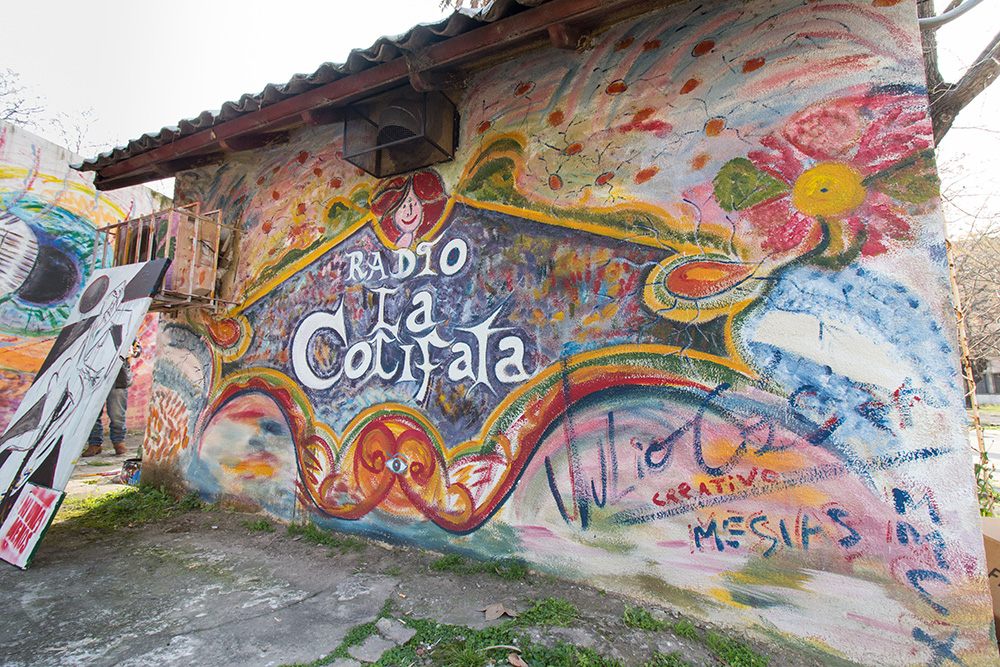
A sign for Radio La Colifata. (All Photos: Alejandro Cynowicz)
The weather is chilly, but the sun is shining. It’s Saturday, August 13, the tail end of winter in the southern hemisphere. A crowd is gathered in the patio of the Hospital Borda in Buenos Aires, Argentina. They sit in a circle of chairs near a couple of small, brightly painted buildings, barely larger than sheds. Murals and mosaics dot the walls. One mosaic reads: Siempre Fui Loco—“I’ve always been crazy.”
Every Saturday a non-governmental organization named La Colifata comes to this “neuropsiquiátrico,” or psychiatric hospital, to host Radio La Colifata: the first radio to be run from inside a mental health institution.
The hospital hallways are empty; beige paint is peeling on the walls, and a few stray dogs roam the hallways freely. There seems to be no staff around, and only a few patients walk through halls, unsupervised. Two men sell knickknacks on blankets on the floor. But in contrast to the desolate vibe inside the hospital’s walls, outside a festive atmosphere prevails. People chat, laugh, and pass around drinks. In front of the shed, a console with a computer and soundboard is set up to record.
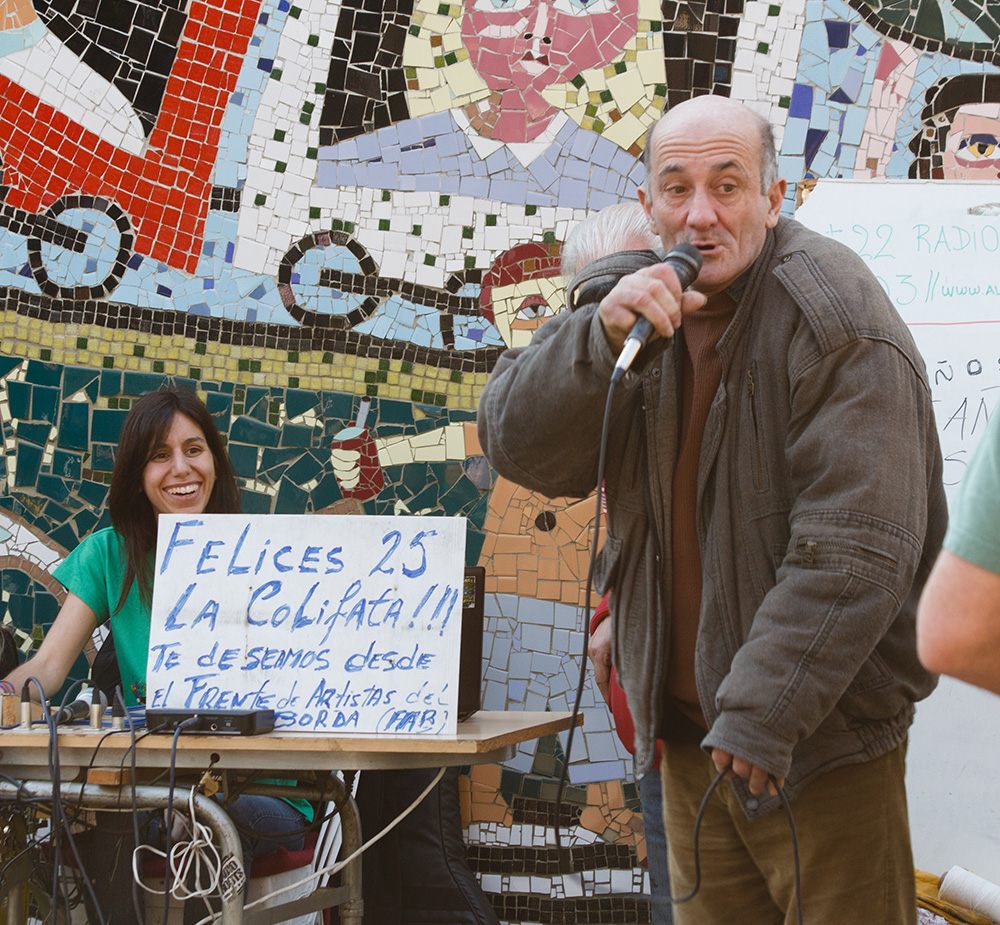
A patient singing.
The patients control the show, which lasts for four hours on Saturday afternoons and is broadcast on local radio as well as online. Regular presenters have their own programs; on a recent Saturday, Silvina read her poetry and Hugo Lopez sang a song about loving his cellphone, followed by a debate about modern technology.
But this Saturday is special; it is Radio La Colifata’s 25th anniversary. A crowd of well-wishers has come out to show support. Colorful balloons hang from strings, which crisscross over the crowd seated in chairs and on the grass.
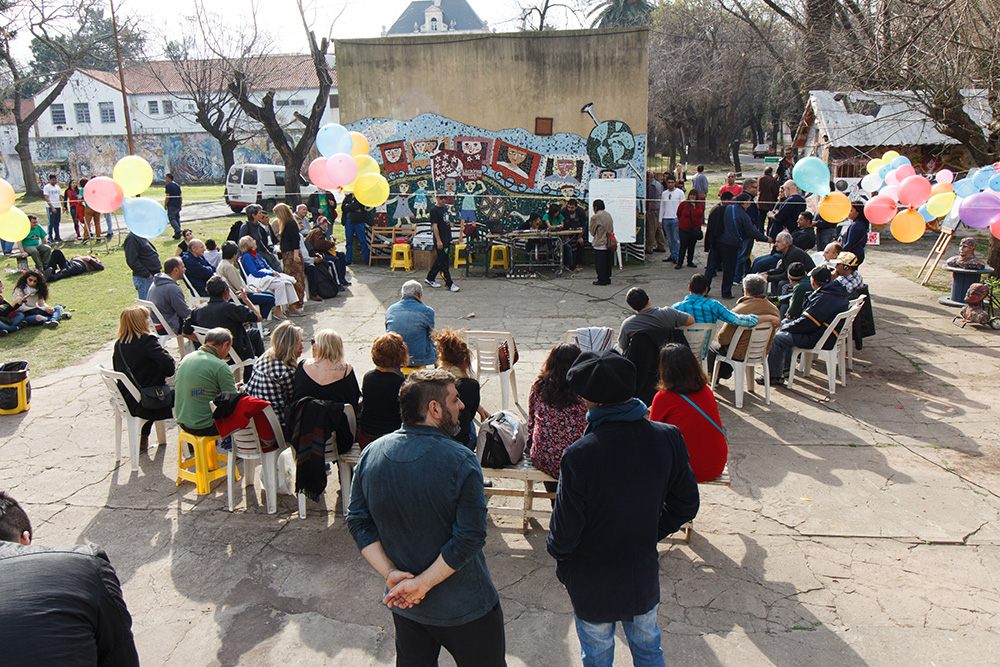
The scene of the 25th anniversary celebrations.
According to Alfredo Olivera, La Colifata’s founder, the radio has two main goals: to destigmatize mental illness by creating a bridge between society and the patients, and to offer a healing tool for patients who have few other opportunities to express themselves and be heard. “The radio came to be as an idea that was going to create a bridge of communication with the outside world,” he says. And the method works; Olivera says that of the patients released from the hospital, the ones that participated in the radio show are much less likely to be interned again than those who didn’t.
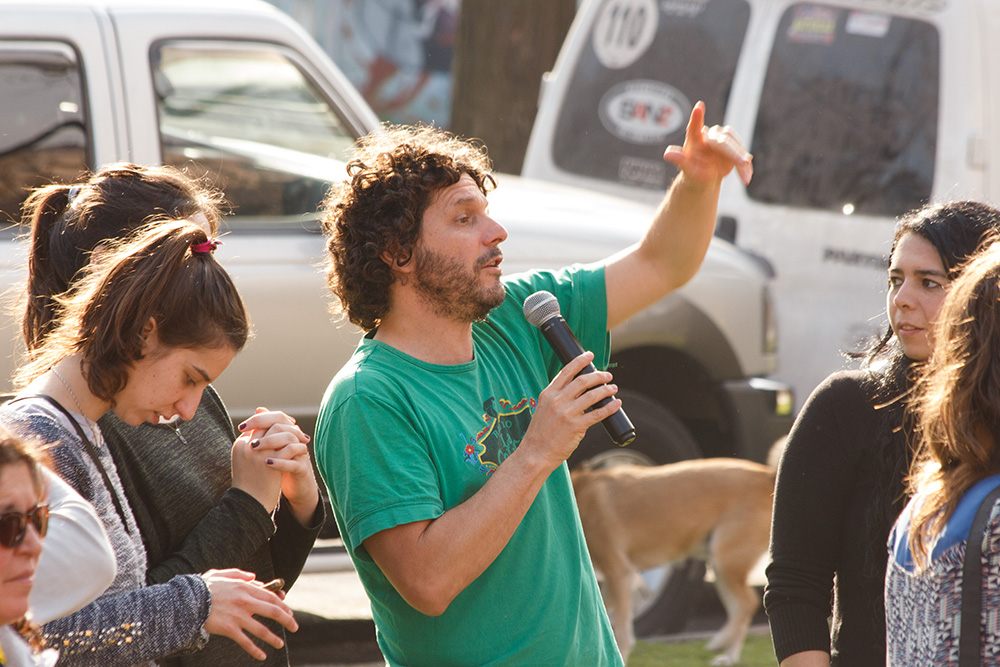
Alfredo Olivera, La Colifata’s creator.
Lopez, an ex-patient and one of the radio’s regular contributors, explains it less clinically. La Colifata helped him “feel like a person,” he says. Other patients and ex-patients share similar feelings throughout the afternoon. “These days, everyone can talk. But it’s more difficult to be heard,” says Olivera.
On this anniversary, there are scores of people present: patients, ex-patients, the radio’s founders and long-time collaborators, psychologists who want to learn from the radio’s unique approach to healing. Yet it can be difficult to tell who has been diagnosed mentally ill and who has not. Everyone is sitting and talking together, laughing, eating, smoking cigarettes. One of the regular speakers holds the microphone in one hand, his infant nephew in the other. His sister, the baby’s mother, stands behind him. He credits La Colifata’s work with changing the attitudes people have about mental illness. People are no longer afraid to bridge the gap between “sane” and “crazy” and walk through the hospital’s front gate, he says. The radio is breaking down walls.
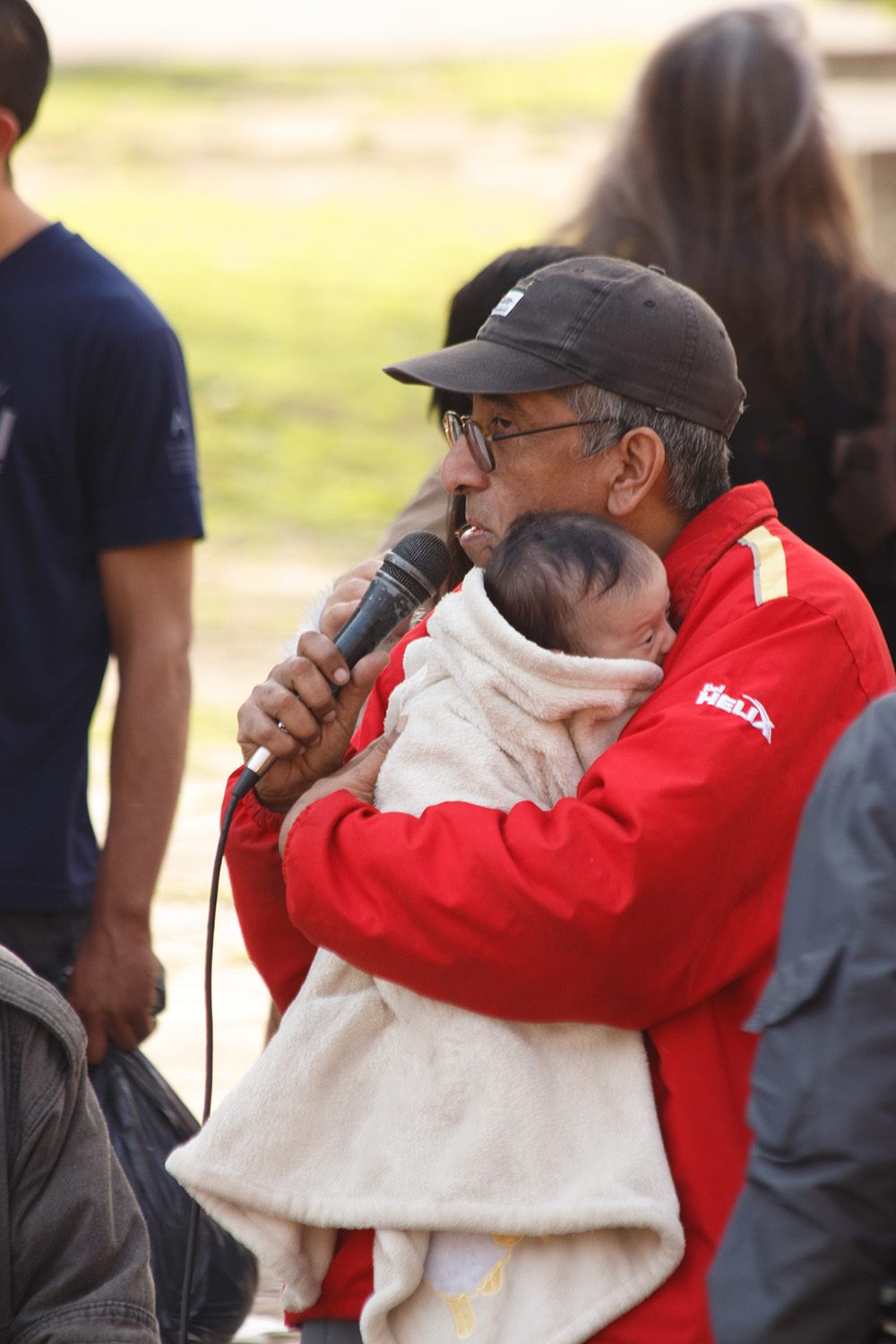
Although kids are not allowed to enter the hospital, an exception was made for this patient’s nephew to join the party.
Radio La Colifata—La Colifata means “crazy” in local slang—has attracted an audience of millions of people over the years. But that doesn’t mean everything always runs smoothly; this is still South America, and operational hiccups are the norm. During the anniversary transmission the power cuts out unexpectedly halfway through the show. The sound system dies, the microphones shut off. The computer can still run on battery power but the internet is disconnected, rendering it useless. Nobody seems bothered.
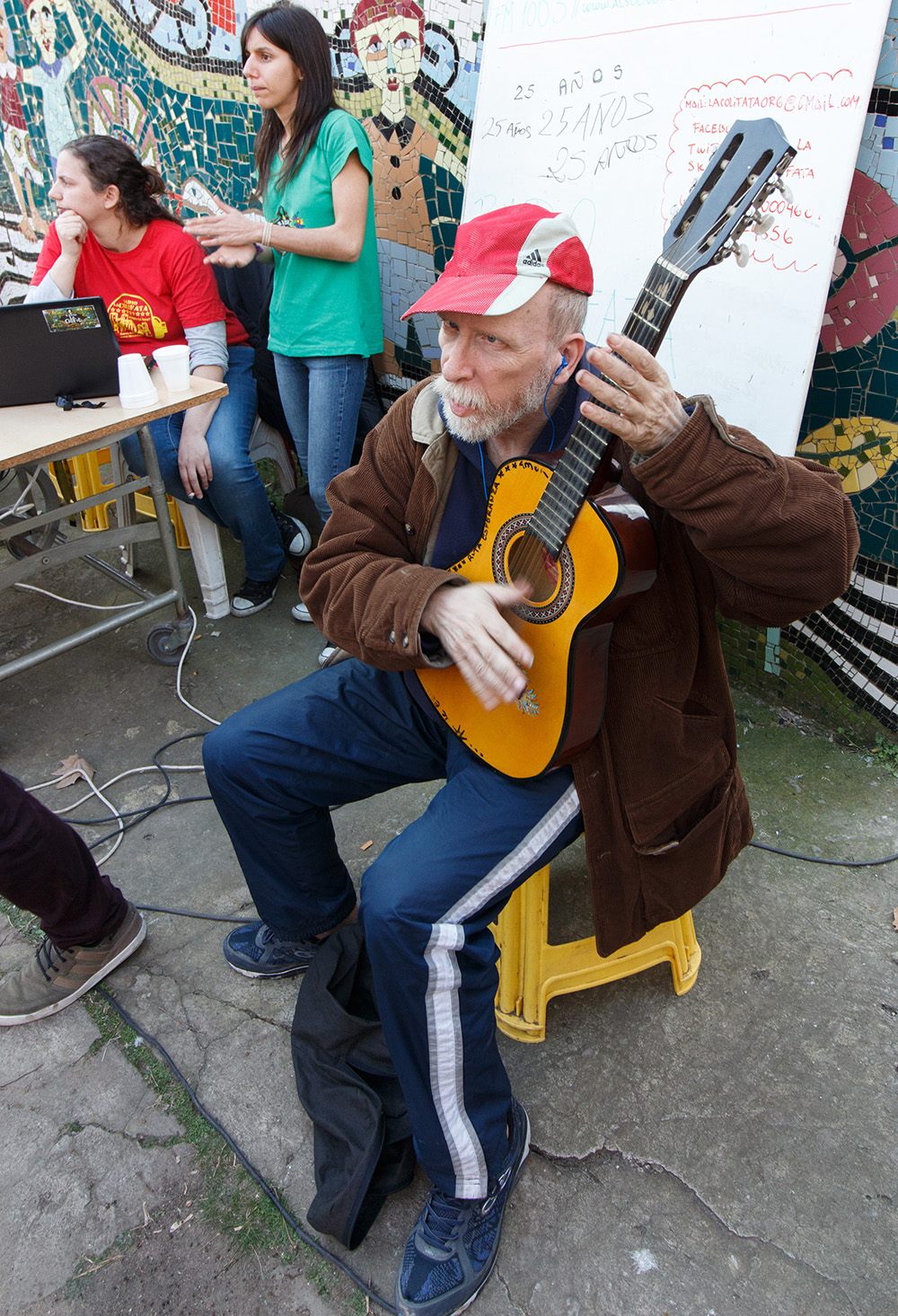
Even during an electric power blackout, music goes on in La Colifata.
These things happen sometimes, we are told. One host even hints that the Borda hospital has cut the power before as a punitive measure—the hospital may allow La Colifata to broadcast from inside its walls, but the radio and the institute have had conflicts in the past, according to several of the hosts. When it becomes clear that the power is out on the entire city block and probably won’t return soon, La Colifata adapts. Someone pulls out a guitar, a few others gather around to sing. The circle of chairs tightens. A few people leave, but most stay. Some patients get up to dance; it’s clearly the moment they’ve been waiting for. Paired up on their own, they move with equal enthusiasm to salsa or strumming rock.

Patients show their dance moves in a breakdance battle.
Later, when the sound system has returned and hip-hop comes on, a few of the more intrepid young men begin a short breakdance battle. It’s not that anything goes here, or that everyone does what they wish; rather, it’s that everyone is encouraged to express themselves and show respect to each other. “Here in La Colifata we try to create a context so that each person, ‘sane’ or ‘crazy,’ becomes part of the group process … that’s what creates the positive results.” Olivera says.
La Colifata has come a long way since its humble beginnings 25 years ago. Back in the day, “a group of people would get together in the patio of the psychiatric hospital with a small recorder that we passed around from one person to the next, and each person would give their opinion, talk, and reflect about their feelings and their way of viewing the world … I would edit the footage and transform it into short fragments that were two or three minutes long and bring those to a local FM radio station,” Olivera says.
Nowadays La Colifata has its own antennae and FM radio station—its full name is 100.3 LT 22 Radio La Colifata—as well as a website with live streaming. Listeners Tweet encouragement or questions to their favorite broadcasters, and other radio programs have retransmitted La Colifata’s shows, expanded the audience to thousands and even millions at times.

Lalo Mir (left), a famous mainstream radio host, has backed this project since its inception.
Many of the radio’s hosts have been collaborating with La Colifata since the ’90s. They have been through highs and lows together. The singer Manu Chao performed a show in collaboration with the Colifatos—as they call themselves—and director Francis Ford Coppola shot scenes for the movie Tetro in the hospital’s yard. Together the Colifatos have also traveled to places like Costa Rica and Bariloche to raise awareness about mental illness.
In recent years, similar radio shows have popped up all over South America and the world. During the anniversary broadcast, Olivera goes through the list: Chile, Costa Rica, Italy, France—it goes on and on, dozens and hundreds of stations that have been inspired by La Colifata’s ideology and work with students, psychologists, volunteers and patients all over the world to help break down the walls around the Borda Hospital and others like it.

A mosaic on the wall: “Siempre fuí loco”, meaning “I’ve always been crazy”.
Night falls on the party, and the broadcast ends. One patient is selling his poetry, printed on glossy paper; another offers a painting. Most people drift away, back to the outside world and their day-to-day lives, or inside the walls of the hospital for their evening meal. But the radio has one last surprise to offer today: a birthday cake, complete with candles and sparklers. The group huddles together to sing happy birthday to La Colifata, and wish her many more years to come.










Follow us on Twitter to get the latest on the world's hidden wonders.
Like us on Facebook to get the latest on the world's hidden wonders.
Follow us on Twitter Like us on Facebook